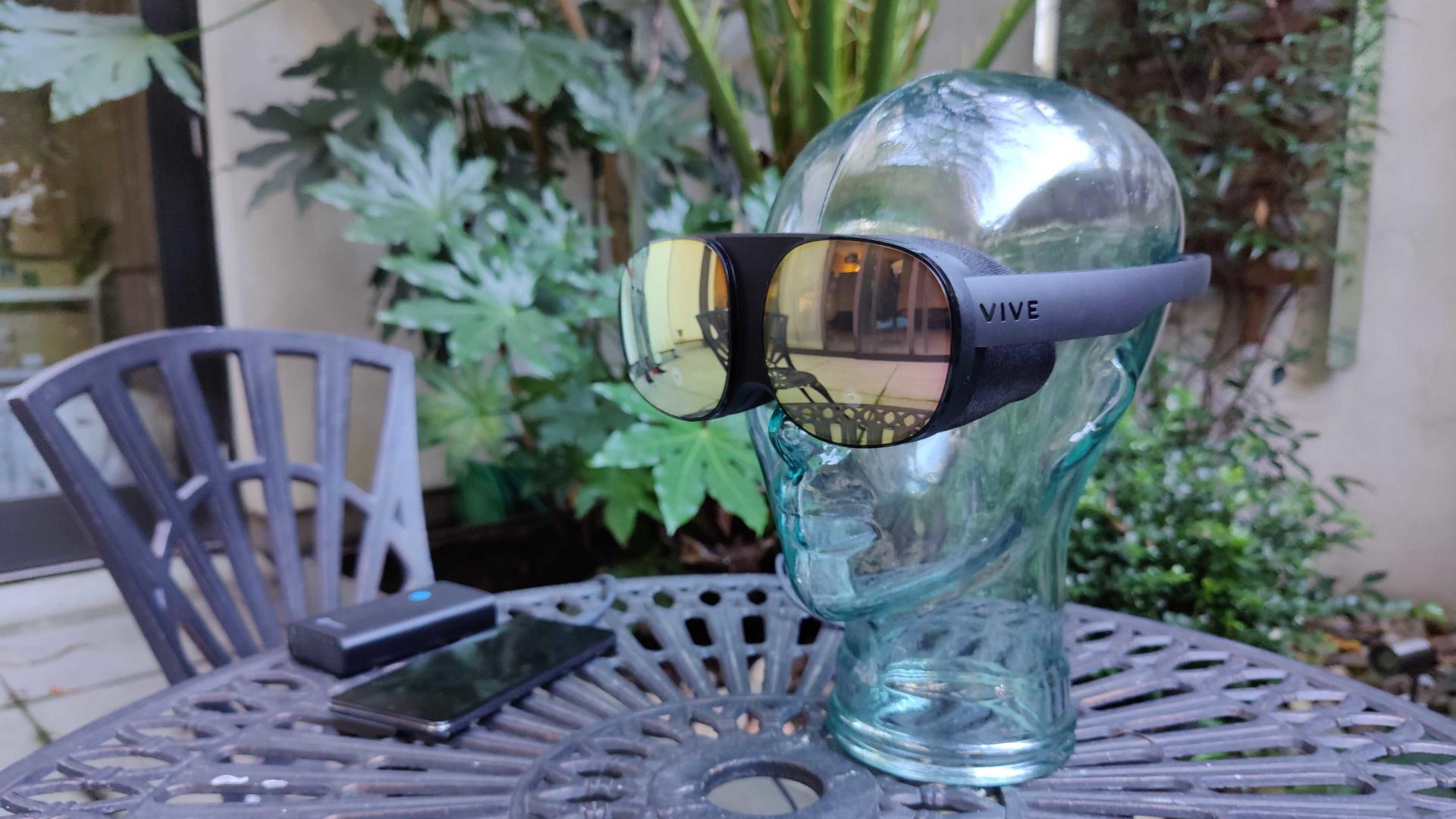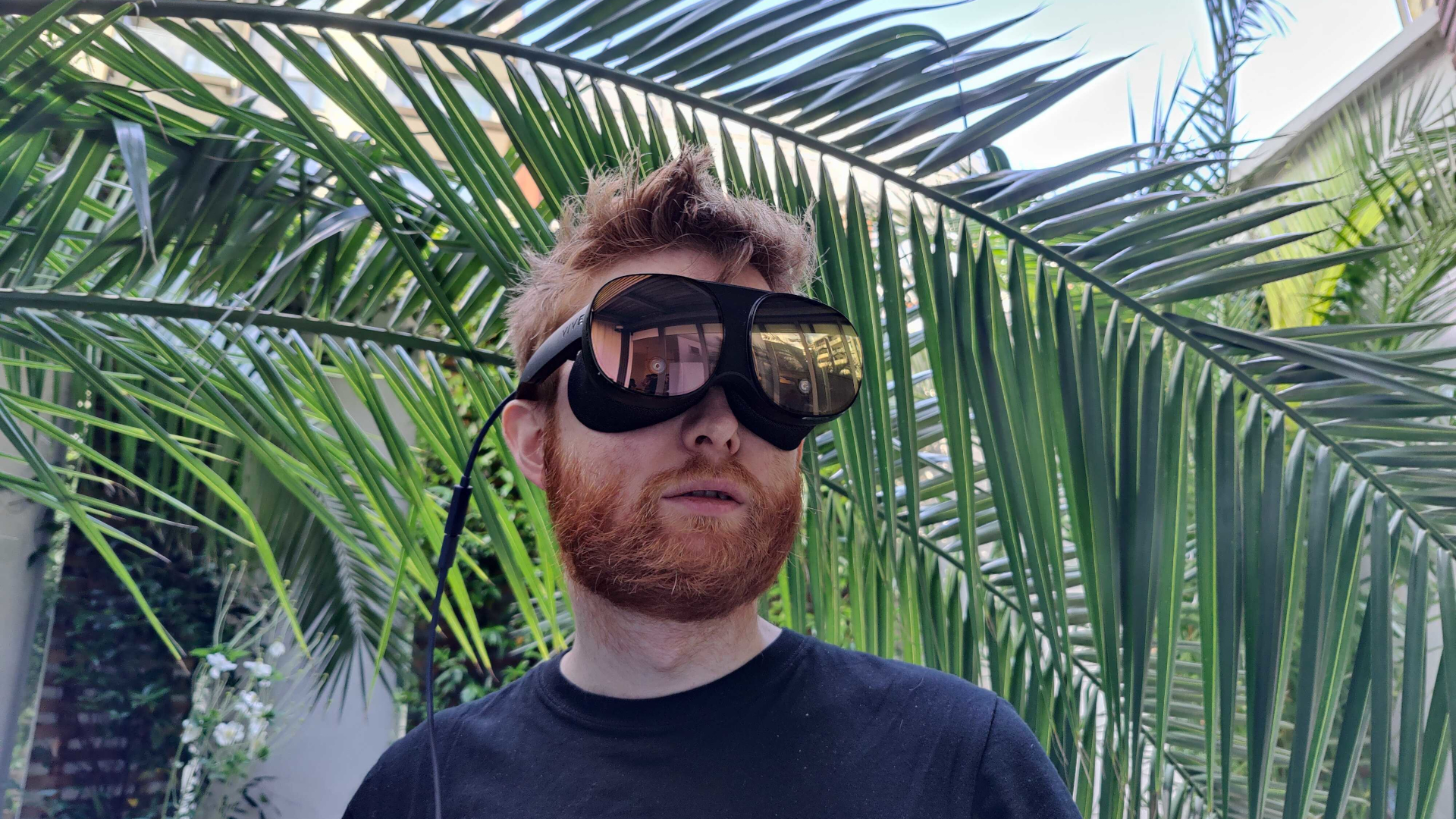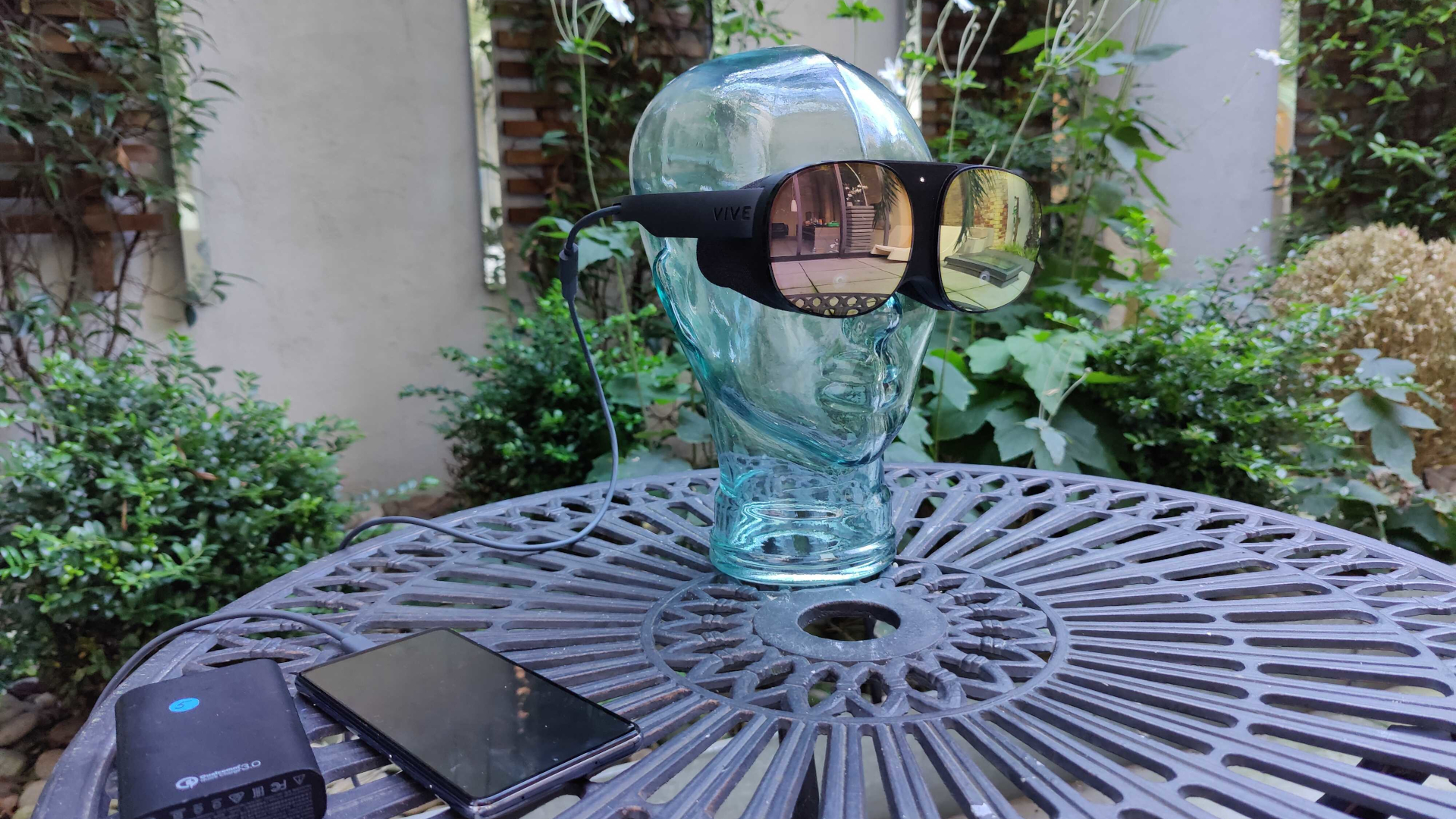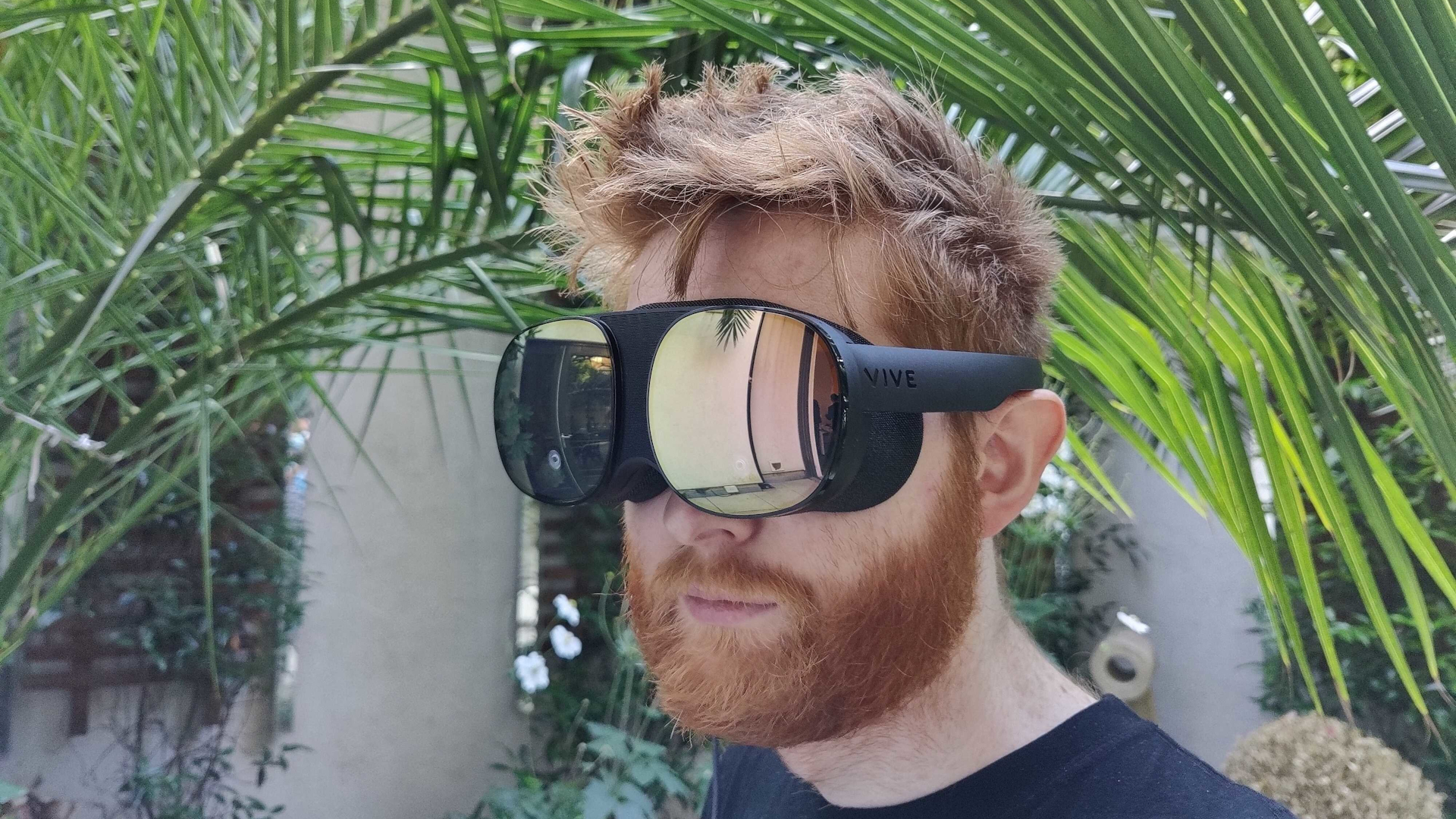The HTC Vive Flow is a $499 VR headset that doesn't need a PC
HTC's new portable VR headset is looking to bring virtual reality to the masses.

HTC has finally revealed its next step in the world of VR, with the HTC Vive Flow officially being unveiled yesterday.
When we're thinking about the best VR headsets, we usually imagine gaming devices — huge headsets and a mess of wires plugged into your PC. Not so with the HTC Flow, which the company is describing as a pair of "immersive glasses" rather than a VR headset. So what, apart from its small size, sets the HTC Vive Flow apart from the rest of the VR competition? We actually got the chance to try out the Flow ahead of this release, so we can walk you through our experiences to help you decide if it's right for your space VR needs.
HTC Vive Flow is being aimed at a much wider audience, with a variety of use cases being highlighted. First things first, it's not aimed at gamers — you can play some games on it, but the Flow isn't a specs powerhouse so you’re not going to be running Half Life Alyx on it. Instead, the Flow is all about providing you with privacy when you’re out and about. As HTC describes it, the Flow "lets people find moments of calm and well-being for themselves throughout the day." Sounds very zen, but what does that actually mean?

"With VIVE Flow, HTC is taking technology in a new direction, focusing not on what we do, but on how we feel. Maintaining our wellness has come to the forefront in the last few years, with so many millions feeling stressed every day, so it has never been more important to take time out to calm our minds, and VIVE Flow provides the perfect opportunity to escape our four walls and immerse ourselves in our ideal ambience," said Cher Wang, Chairwoman and CEO of HTC.
HTC gives a variety of examples, and we got to test a load of them out during the preview event. There are meditation apps, including Tripp, so you can have some chill, zen moments no matter where you are. There are also a bunch of brain-training apps, along with a host of games and interactive experiences like Curious Alice, which we tested. You can also watch TV or movies in your own personal cinema, even when you’re sitting on a busy train or airplane. We think HTC is burying the lede with that last one, because that’s certainly going to be the most popular reason to pick up a Flow for everyday consumers.
With it being positioned as a super portable device, the HTC Vive Flow is impressively lightweight and easy to transport. It weighs just 6.67 ounces (189 grams) and there is a carry case that is sold separately (though it comes free if you pre-order). There are no bulky extra controllers either. Instead, the Flow uses your smartphone as the controller, and it's very intuitive and easy to use.

To keep the weight down, there is no battery in the headset, so it needs to be plugged in to work. It might seem shocking for a portable device to require plugging in, but you’re not going to be walking the streets in this thing - it’s designed for airplanes, trains, coffee shops - places with power supplies on hand, so we don’t mind the lack of battery here to keep the weight down (there is also a sold separately power pack if you need it). This portability eliminates a lot of the usual concerns when it comes to VR headsets, like how to set up your room for VR, or how to build a PC for VR — the Flow is very much the VR headset for people who don’t want the usual hassles of VR headsets.
Breaking space news, the latest updates on rocket launches, skywatching events and more!
It looks striking too - very space age with the reflective front that’s half skiing goggles, half astronaut helmet. You could almost think someone was just wearing an enormous pair of sunglasses if you glance at them wearing the Flow, which is important if you’re expecting people to wear this thing outside.
On the specs front, the actual screen is solid with a 3.2k resolution, 100 degree field of view and 75hz refresh rate. Alongside this, you also get spatial audio from the headset itself (though you can also use headphones for better noise isolation). There is a fancy cooling system too, so you won’t have a scolding piece of computer hardware strapped to your face.

The headset comes with adjustable eye lenses so you can easily dial it into your vision, which means that glasses wearers can use the Flow without wearing their glasses too. There is also a flexible and detachable face gasket that helps the headset sit comfortably on your face.
The VIVE Flow will be released in November and costs $499/£499/€549. It can be pre-ordered from vive.com/vive-flow. You can also sign up to Viveport, a new subscription service launching with the Flow that offers access to a range of apps including games, brain training, meditation, and even a Lo-Fi coffee shop simulation. Viveport will cost $5.99 per month.
Honestly, that price point is rather steep for a machine with these specs - it’s more expensive and significantly less powerful than the Oculus Quest 2. HTC is definitely onto something here with the lightweight, portable VR headset and we’d love to have one of these things on a long-haul flight or train journey, but the price really does sting.
Follow us on Twitter @Spacedotcom and on Facebook.
Join our Space Forums to keep talking space on the latest missions, night sky and more! And if you have a news tip, correction or comment, let us know at: community@space.com.

Ian is the Entertainment Editor at Space.com, covering movies, TV series, and games in the space and sci-fi realms. He's a massive sci-fi nerd and has been writing about games and entertainment for over eight years, with articles on sites like Space, LiveScience, GamesRadar, and more. With a degree in biology, a PhD in chemistry, and his previous role at the Institute of Physics Publishing, Ian is taking a world tour through the different scientific disciplines.
